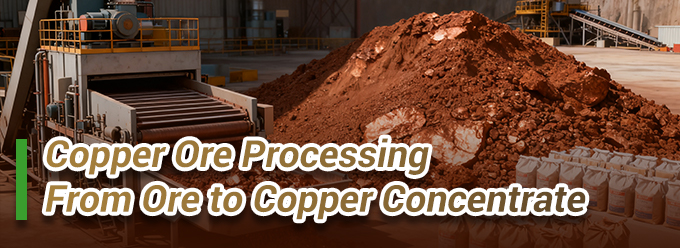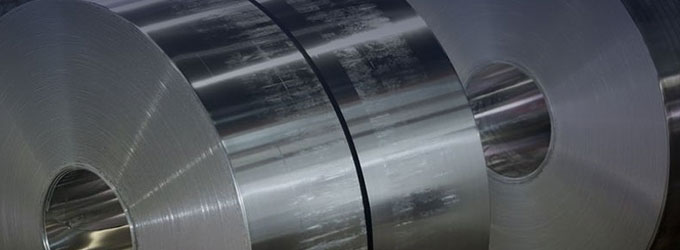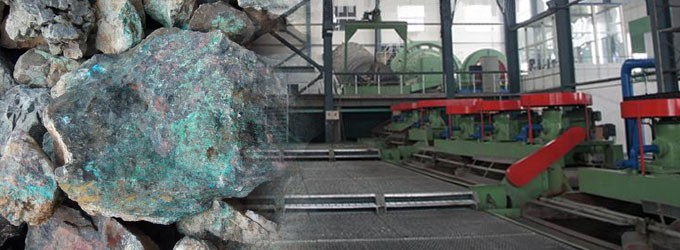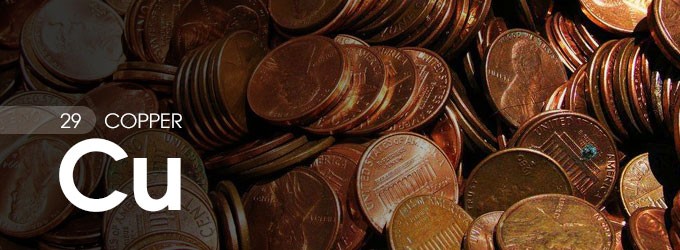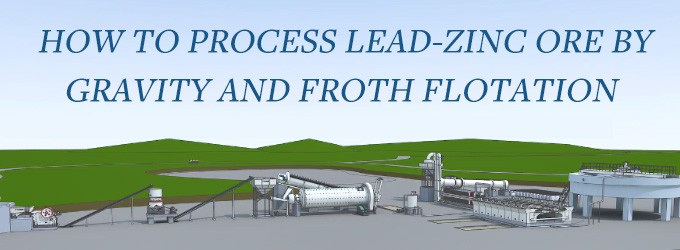Non-ferrous metals are the basic materials for the development of the national economy. Most industries such as aviation, aerospace, automobiles, machinery manufacturing, electricity, communications, construction, and home appliances are based on non-ferrous metal materials.
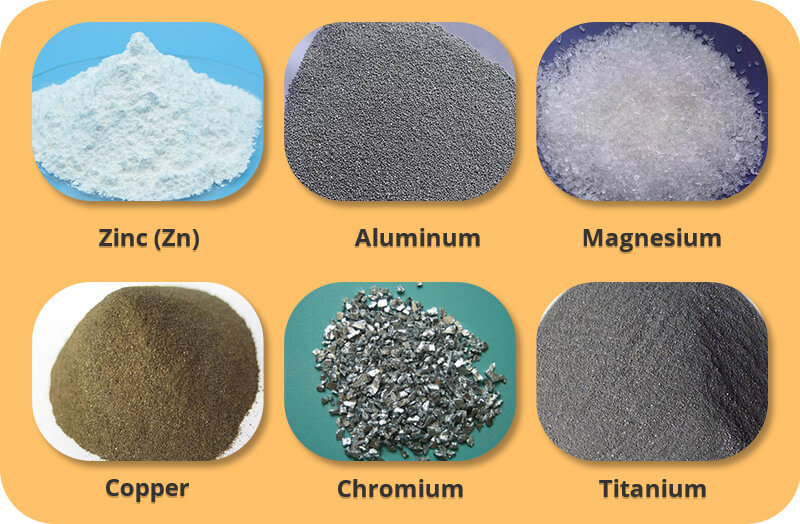
Commonly used non-ferrous metals
Commonly used non-ferrous metals include zinc, aluminum, magnesium, copper, chromium and titanium.
Zinc — the flower of life
Zinc, one of the essential elements of the human body, participates in the composition of more than 200 kinds of enzymes and is known as the "flower of life".
At the same time, it is also a common non-ferrous metal that can be alloyed with a variety of non-ferrous metals, the most important of which is brass formed with copper, tin, lead, etc., and die-casting alloys with aluminum, magnesium and copper.
Physical properties of zinc
| State | Silver-white, slightly blue non-ferrous heavy metal |
| Melting point | 419.5℃ |
| Boiling point | 906℃ |
| Density | 7.14 g/cm³ |
| Mohs hardness | 2.5 |
Zinc resources and minerals
The world's proven zinc resources are about 1.9 billion tons. There are more than 50 kinds of known zinc minerals, among which the most valuable ones for industrial use are sphalerite (ZnS), smithsonite (ZnCO3), zincite (ZnO) and hemimorphite (ZnSiO4O·H2O).
Main producing countries: China, Peru, Australia, India, the United States, Mexico, etc.
Uses of zinc
Zinc is mainly used by people in the form of galvanizing and zinc alloy. At present, it is second only to copper and aluminum in the consumption of non-ferrous metals.
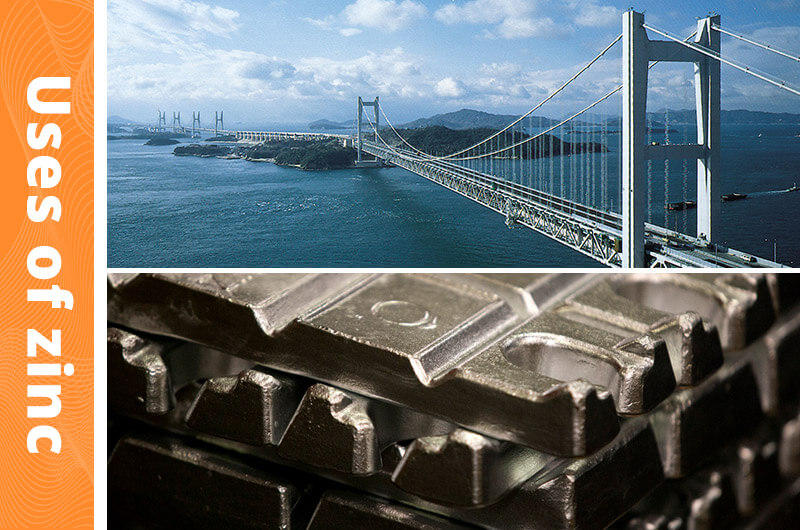
Uses of zinc
Galvanizing: Galvanizing is widely used in automobile, construction, shipbuilding, light industry and so on. For example, coatings, zinc blocks (steel components that connect ships, bridges as well as offshore oil and gas derricks), roofs and hot-dip galvanizing.
Zinc alloy: Zinc can form alloys with many non-ferrous metals, which are used in the production of die castings and various parts in the automobile manufacturing and machinery industries.
Other applications: instrument parts and shells, coins, batteries, underground explosion-proof equipment, pigments, medicine, rubber, paint and other industries.
Aluminum — modern material
Aluminum has replaced steel in many places, and it performs even better than steel in many ways.
Excellent properties of aluminum
Density: Although aluminum is not as light as magnesium, it is also excellent. Its density is only 1/3 of iron and 30% of copper.
Corrosion resistance: Aluminum quickly develops a dense oxide film on its surface, which makes it popular with many materials engineers.
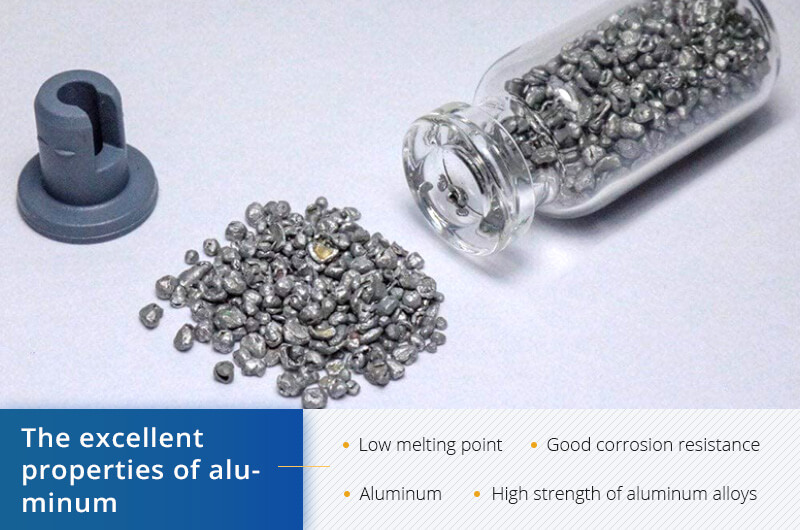
Excellent properties of aluminum
Melting point: The melting point of aluminum is relatively low, only 660 degrees, so it is easy to be pressure-cast into various complex shapes at a lower temperature, which is difficult for iron and copper.
Strength: The only drawback of aluminum is its lack of strength, which can be remedied by mixing other metals into aluminum alloys.
Aluminum resources and minerals
Aluminum is extracted from bauxite containing 50% alumina. Aluminum in this form in minerals is one of the most abundant metal elements on our planet.
The world's bauxite resources are relatively rich. According to data from the US Geological Survey in 2020, there are about 55-75 billion tons of bauxite resources.
Main producing countries: China, India, Russia, Canada, United Arab Emirates, Australia, etc.
Uses of aluminum
Aluminum alloy: Aluminum alloy has been widely used in airplanes, automobiles, trains, ships, space rockets, space shuttles and satellites.
Aluminum foil: Aluminum foil is widely used for packaging cigarettes, candy, etc. It can also be made into aluminum wire and strip and can be rolled into various aluminum products. It is often used to manufacture medical equipment, chemical reactors, petroleum refining equipment, oil and natural gas pipelines, etc.
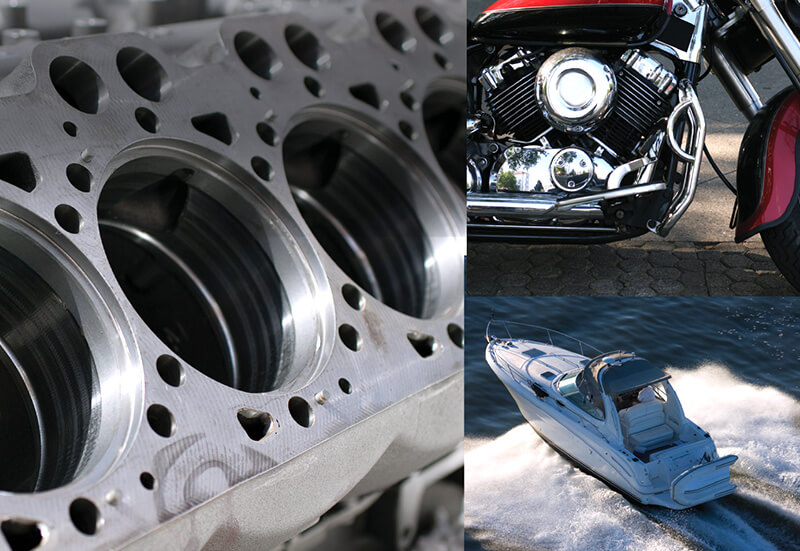
Uses of aluminum
Explosive mixture: ammonium aluminum explosive, combustion mixture and lighting mixture.
Cryogenic equipment materials: refrigerated storage, snow vehicles, hydrogen oxide production equipment.
Coatings, additives, catalysts: silver powder, deoxidizer, thermite, food additives, etc (see more aluminum uses).
Magnesium — the lightest useful metal
Magnesium is one of the most abundant light metal elements on the earth.
Physical properties of magnesium
| State | Silver-white, lightweight and malleable metal |
| Melting point | 650℃ |
| Boiling point | 1090℃ |
| Density | 1.74 g/cm³ |
Magnesium resources and minerals
Magnesium is the eighth-most abundant substance in the universe and the third most abundant in seawater.
Main producing countries: China, Turkey, Russia, Austria, Slovakia, Spain, Brazil
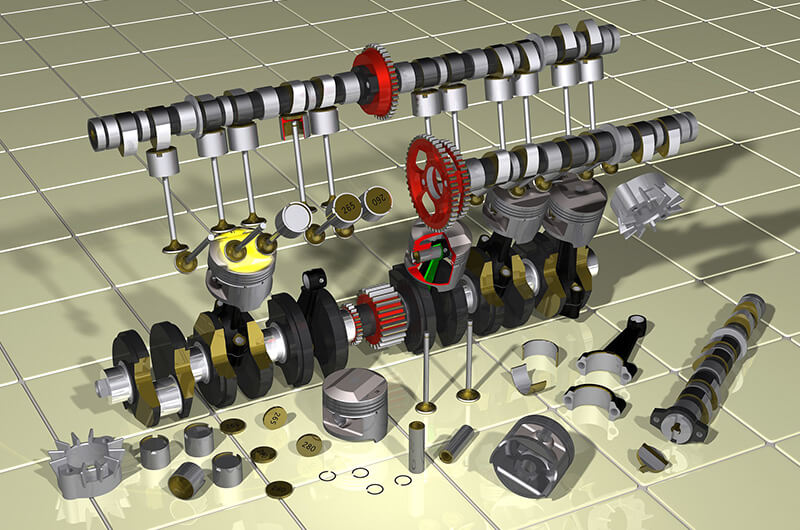
Magnesium: one of the most abundant light metal elements on the earth
Uses of magnesium
Nowadays, magnesium, as the third-largest metal engineering material after steel and aluminum, is widely used in aerospace, automotive, electronics, mobile communications, metallurgy and other fields.
| Application areas | Specific uses |
| Aerospace | Motor parts, propellers, gearboxes, support structures, etc. |
| Car | Automobile instrument panel, seat support, gearbox housing, steering system components, engine cover, door, engine cylinder block, frame, etc. |
| Medical | Implant Materials |
| Electronic communication | Computer mobile phone case, camera frame |
| Military industry | Cabinet rack, siding, bracket, wheel hub, engine and other parts of military aircraft and vehicles |
Copper — human partner
Copper is an incredible universal metal, and it is so closely related to our lives. Copper is the oldest metal used by mankind after gold.
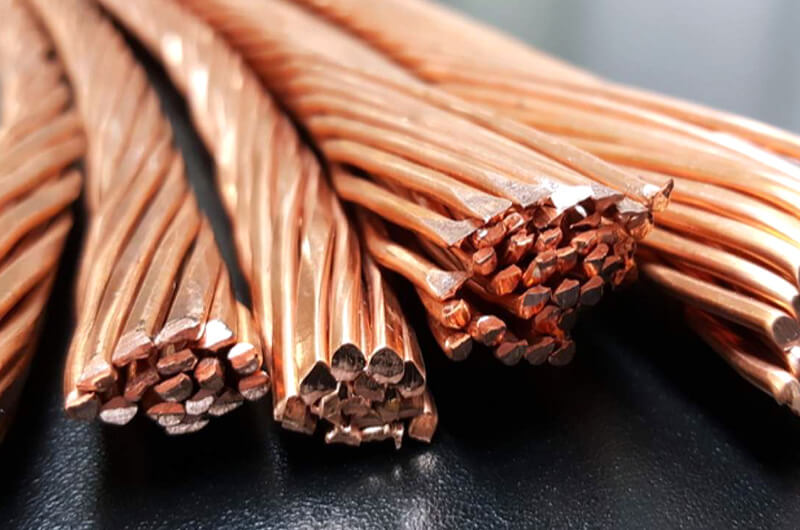
Copper: the oldest metal used by mankind after gold
Physical properties of copper
| State | Metal with a purple-red luster |
| Melting point | 1083.4±0.2℃ |
| Boiling point | 2567℃ |
| Density | 8.96 g/cm³ |
Copper resources and minerals
After beneficiation, copper ore becomes copper concentrate or copper ore with a higher grade. Copper concentrate needs to be smelted and purified to become refined copper and copper products. There are more than 280 types of copper minerals in nature. The main types of copper ore are: natural copper, chalcopyrite, bornite, chalcocite, azurite, copper blue, etc.
Estimates of copper deposits by the U.S. Geological Survey put confirmed copper reserves at about 2.1 billion tons and undiscovered resources at about 3.5 billion tons.
Main producing countries: Chile, Peru, China, Congo (Kinshasa), the United States, Australia, Zambia
Uses of copper
Copper plays a very important role in modern society and is widely used in power, electronics, energy and petrochemical, machinery and metallurgy, transportation, light industry, emerging industries and other fields (copper uses in details).

Uses of copper in our daily life
Chromium — color changing metal
Because chromium can generate beautiful multi-color compounds, such as metallic chromium is silvery-white, chromium sulfate is green, and magnesium chromate is yellow... so it is called a color-changing metal.
Physical properties of chromium
| State | Hard, brittle, silvery-white metal with a sky-blue tinge |
| Melting point | 1857±20℃ |
| Boiling point | 2672℃ |
| Density | 7.19 g/cm³ |
| Specific heat | 0.45 J/kg |
Chromium resources and minerals
There is no free chromium in nature, and the main chromium-bearing ore is chromite. The world has 12 billion tons of transportable chromite, enough to meet the demand for centuries.
Main producing countries: Kazakhstan, South Africa, Turkey, etc.
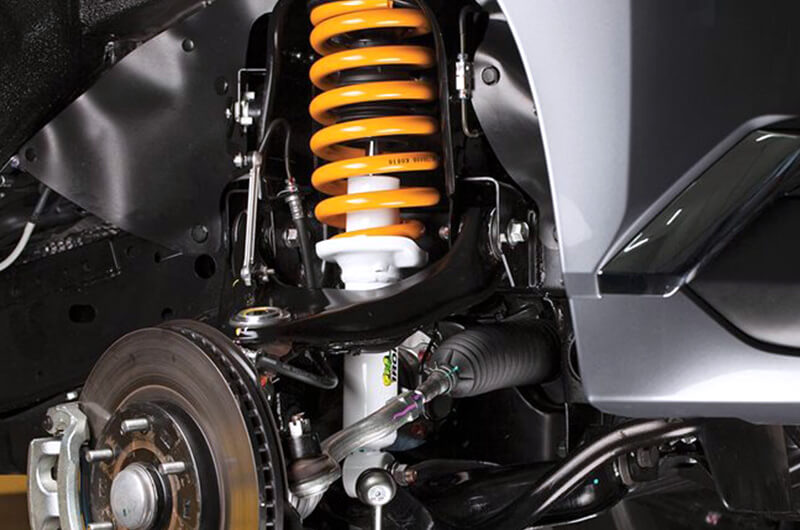
Uses of chromium
Uses of chromium
| Application areas | Specific uses |
| Decorative chrome plating | Door handles, buffers, bathroom faucets, furniture, kitchen utensils, tableware, etc. |
| Hard chrome plating | RAM in the job control block, jet engine components, plastic molds, shock absorbers, etc. |
| Black chrome plating | Musical instrument decoration and solar energy utilization |
Titanium — space metal
Due to its stable chemical properties, good high temperature resistance, low temperature, strong acid and alkali resistance, as well as high strength and low density, titanium is known as "space metal" and has broad application prospects in aerospace, weapons, energy, chemical industry, metallurgy, construction and transportation.
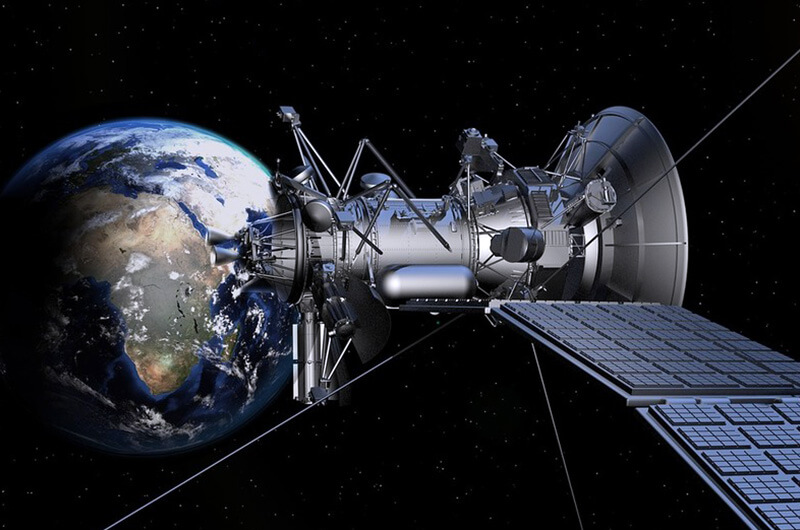
Titanium - space metal
Physical properties of titanium
| State | Gray transition metal |
| Melting point | 1660℃ |
| Boiling point | 3287℃ |
| Density | 4.54 g/cm³ |
Titanium resources and minerals
Titanium is one of the most widely distributed and abundant elements in the earth's crust, accounting for 0.16% of the mass of the earth's crust, more than 10 times more than the sum of copper, tin, manganese, and zinc.There are about 140 known titanium minerals, but the main industrial applications are ilmenite (FeTiO3) and rutile (TiO2). The world's total resources of anatase, ilmenite and rutile exceed 2 billion tons.
Main producing countries: China, Canada, Australia, South Africa, Mozambique, etc.
Uses of titanium
| Application areas | Specific uses |
| Aerospace | Jet engine parts, fuselage parts, rockets, satellites, boosters, engine compartments, casings, guide vanes |
| Chemical | Reactors, concentrators, distillation towers, electrodes, heat exchangers, electrolytic cells, etc. |
| Ship | Propeller, water jet propeller, hot water heat exchange system, valve, etc. |
| Biomedicine | Artificial joints, artificial implants and orthodontics, pacemakers, cardiovascular stents, etc. |
| Daily necessities | Watches, spectacle frames, fishing rods, walking sticks, kitchenware, etc. |
| Building | Roofs, outer walls, railings, signs, etc. |
| Automobile | Load-bearing springs, connecting rods, spirals, etc. |


